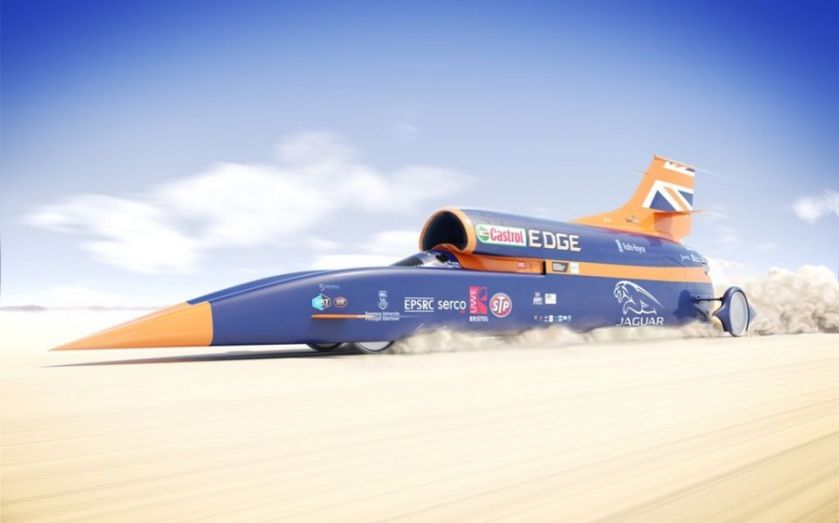Bloodhound is about to become the new fastest car in the world – and it comes from Bristol

A new car called Bloodhound is about to become the fastest car in the world.
Built by British engineers, it is designed to beat the world land speed record of 763mph, which was set by the twin-jet Thrust Super Sonic Car in 1997.
Initial low-speed tests will be carried out at an airport in the UK in August, and Bloodhound will then be sent to South Africa to try and gain the title of fastest car ever built.
The fastest driver won't change, however – it was Wing Commander Andy Green who set the record in 1997, and it will be Green who tries to beat this speed in the Bloodhound.
The project is a private enterprise, but it has received substantial support from the UK government, according to the BBC.
What makes it so fast?
The final touches are currently being added to Bloodhound at a design centre in Bristol, using some of the most modern technologies available.
Weighing 7.5 tonnes, its engines produce over six times the amount of power of all the Formula 1 cars put together.
It is built from a mix of car and aircraft technology, with the front half being a carbon fibre monocoque like a racing car and the back half being a metallic framework and panels like an aircraft.

Inside the Bloodhound cockpit (Source: Stefan Marjoram)

Building Bloodhound requires a large team of engineers (Source: Stefan Marjoram)
It has a nose made of light-weight Titanium, and the outer surfaces have been designed to withstand an extreme air load – this could reach 11 tonnes per square metre once the car reaches its top speed.
The batteries and on-board electronics system are contained in the nose, while the Eurofighter jet engine will provide it with enough power to take its speed beyond what has been achieved before.
As well as breaking the world record for speed, the project aims to improve education around the world. On its website, it says it wants to “share this engineering adventure with a global audience and inspire the next generation by bringing science, technology, engineering and mathematics to life in the most exciting way possible”.
We need to create the most advanced car we possibly can and to share all of the technology on the web and via specialist curriculum-valid courses for schools – this is the only way we can inspire a new generation of engineers and meet our objectives.